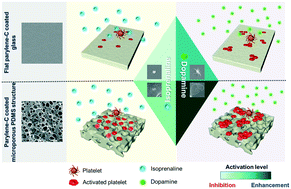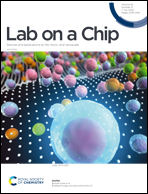Parylene-C coated microporous PDMS structure protecting from functional deconditioning of platelets exposed to cardiostimulants†
Abstract
Most elderly patients after orthopedic and dental implant surgeries are exposed to cardiostimulants to reduce potential blood pressure-related risks of cardiovascular diseases. Such treatments lead to deconditioning of platelet function, which is an important factor in wound healing treatments. We introduced an innovative parylene-C coated microporous PDMS structure that can prevent the functional deconditioning of platelets caused by certain cardiostimulants. At different concentrations of cardiostimulants (IPR; isoprenaline and DA; dopamine), pre-activation, activation, and post-activation of platelets were intensively examined under mechanical and chemical stimulation mimicking the physiological environment on four different surfaces (glass, flat parylene-C coated glass (F-PPXC), microporous PDMS structure (P-PDMS), and parylene-C-coated microporous PDMS structure (S-PPXC)). The 3D microporous structure with parylene-C (S-PPXC) surface could attenuate the deconditioning of platelet function caused by IPR. Moreover, the S-PPXC surface further enhanced the DA-dependent stimulation of platelet function. The reason for this is that the 3D microporous structure with parylene-C S-PPXC induced stable and fast adhesion of platelets through increased surface roughness and softness, resulting in a significant enhancement of platelet activity. Therefore, we propose the use of functional S-PPXC surfaces as a novel strategy in the development of biomedical products.



 Please wait while we load your content...
Please wait while we load your content...